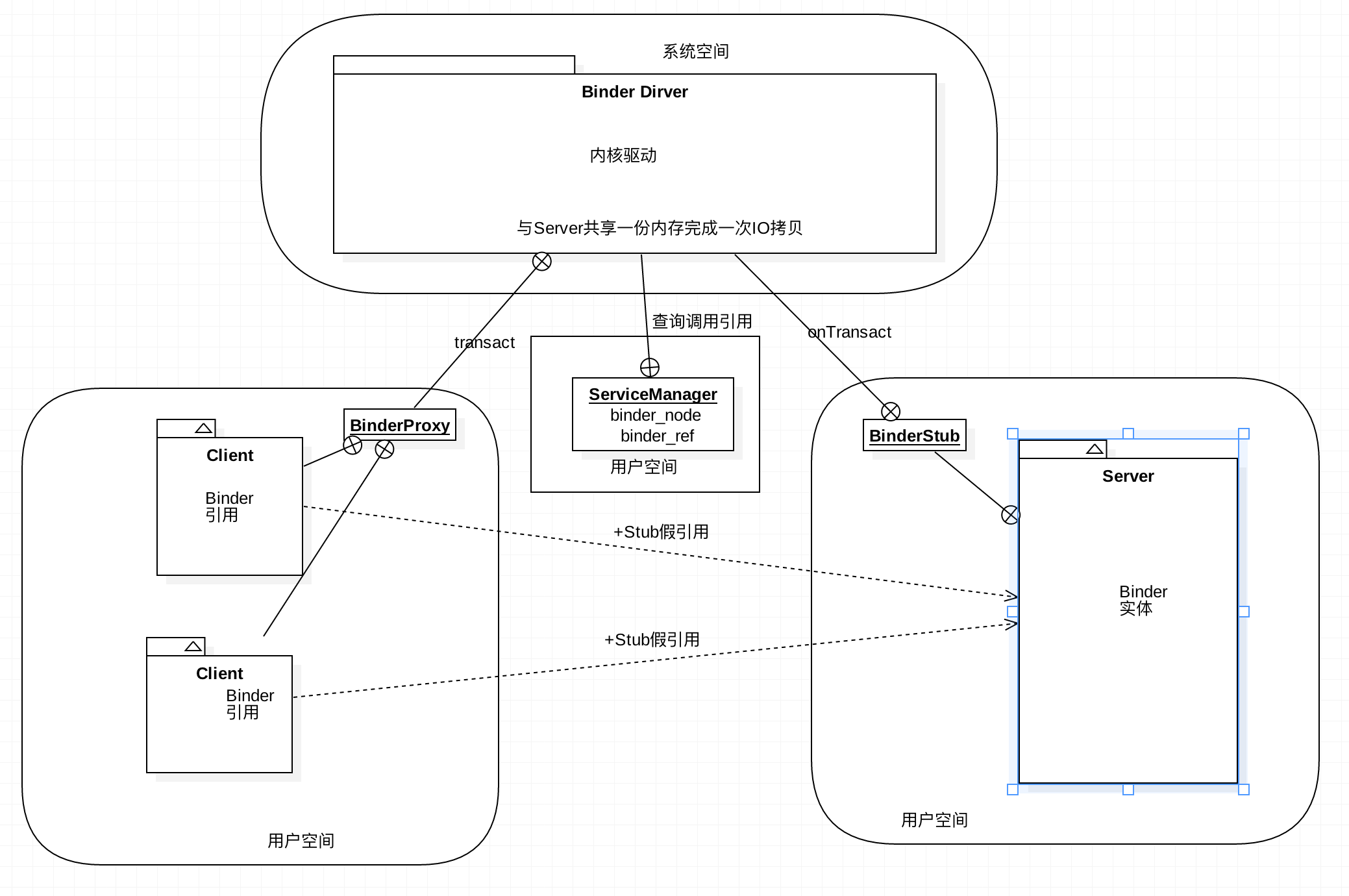知识总结 插件化学习 Binder机制原理
Binder是android系统特有IPC方式,安卓平台中的各种服务交互基本都是Binder机制实现,理解和掌握Binder机制的实现原理可有效提升软件性能优化点,同时Binder机制的应用也是动态代理方式实现插件化基础。

安卓插件化学习 Binder机制原理分析
网上虽然已有很多Binder类似的优秀分析,本文处于自我学习目的,把我学理解和认识的东西记录一下。
Binder属于android平台特有的IPC通道,也是进程间数据交互的核心内容。
安卓平台IPC方式总的来说有5种:1、文件操作;2、Messenger;3、Provider; 4、AIDL;5、Socket。
这五种方式中,2、3、4的实现都用到了Binder机制,这里主要以AIDL的使用讲解Binder。
Binder设计结构理解
1、通信进程两端两个重要对象:一个是本地端的Proxy远程引用对象,一个是远程端的Stub实体对象
2、client端Proxy对象可以根据所定义的继承IInterface接口的相关约定方法来操作server端Stub实体类。
3、Android中在使用系统服务的时候通过getSystemService方法获取到的其实都是Stub把远端的Binder转化的对象,因为系统服务都是在system_server进程中,所以肯定是跨进程获取对象的,那么这个Binder对象其实就是上面的Proxy对象
4、除client和Proxy进程外,还存在者一个serverManager所在的进程(0号引用获取),用来存储proxy引用与stub实体的对应关系。
5、简单理解:ProxyBinder的transact方法调用后会同步(可异步)调用到Stub类的onTransact.这中间进程间数据的一次拷贝都是在系统空间的Binder驱动中完成。

Binder的使用
Binder的使用基本存在与多进程的App中,大家工作的项目中很可能甚少接触底层数据在进程间的传递,特别是业务需求多的应用。然后本地工具类应用如卫士类的产品研发会很经常的应用到Binder,并且会在不同的场合自定义Binder的数据传递方式,这里也很感谢之前工作项目“手机卫士”的实际应用机会。
标准AIDL使用Binder
AIDL( Android Interface definition language)安卓进程间通信接口语言,我们可以通过这种方式定义接口,完成两个或多个进程间的信息传递。
1. 定义.aidl 接口文件
首先要定义进程间需要完成什么操作,传递什么数据,根据需求定义方法接口。
|
|
2. 编译项目生产java文件
定义完.aidl 文件有,通过as build项目后,IDE会帮我们生产对应的java文件在gen目录下。
|
|
3. 定义远端实体对象
|
|
继承Stub类实现方法,并且通过Service的onBind()或Provider的call()提供接口返回给client端。
当然,也可以不定义aidl文件,自己定义Stub类及proxy类,好处是按照自己的需求自定义Stub的达到自定义Parcel读取方式及实现逻辑来解决一些业务需求问题,比如复杂继承类的传递。
4. Client端获取远端ProxyBinder
3中定义好Binder对象后,这个Binder就可以跨进程调用类,获取这个远端binder引用的方法有很多,利用Service启动方法中的ServiceConnection来返回onBinder里的对象。或者用Provider的call根据标记返回指定Binder对象(封装在Bundle中)。
安卓源码ServiceManager分析
ServiceManager是一个全局的manager、调用了Jni函数,实现addServicew getService checkService listService等函数,
Server进程先注册一些service到SercviceManager中。
Client想获得一些service,就要到Service中去获取该Service。
这样,Server和Client之间就可以进行通讯了,
Server和Client之间的通讯都是通过Binder进行的。
——————
欢迎转载,请标明出处:常兴E站 www.canking.win

